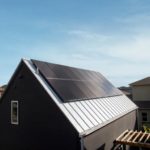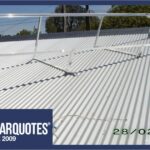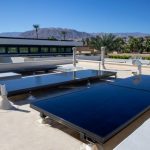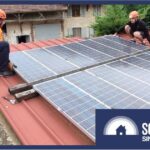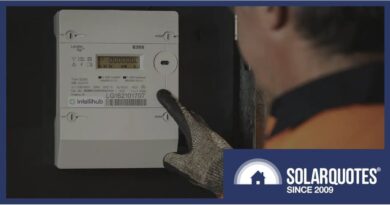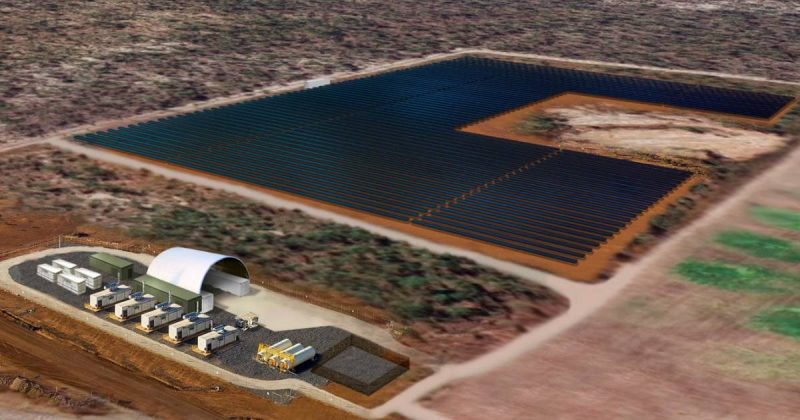There’s No Such Thing As A Badly Oriented Roof For Solar
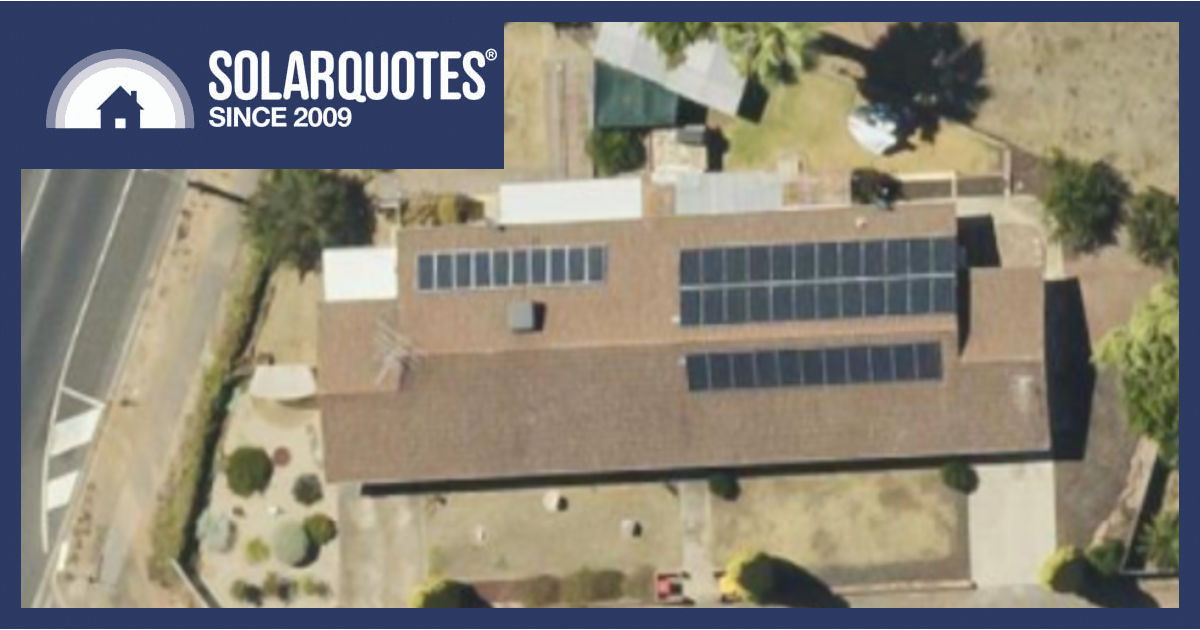
1.85kW left vs 10.85kW right
In Australia, the ideal solar panel orientation to maximise annual energy yield is north. If you’ve been holding back on solar power because your roof’s orientation is east, west or even south, it’s time to reconsider. Any solar is better than none in Australia, and with the advancements in technology and pricing, there’s no such thing as a “badly oriented” roof.
How Times Have Changed: Solar Panel Evolution
Back in the day, panel orientation and efficiency were crucial due to the high costs of solar panels. However, the dropping prices of solar systems and improved technology mean if your roof doesn’t face north, or is a weird pitch, you can cost-effectively just throw more panels at the problem.
Worst Solar Panel Direction In Melbourne Beats Best Direction In London
South-facing solar in Melbourne (the cloudiest capital city in Australia) is actually more effective than the same south-facing array in London.
That’s right, Londoners can have ideally placed solar panels and still not match a “misplaced” Melbournian array.
So even if you’re living under the clouds 180 days per year, the point is having more solar capacity on the roof is always better. When it’s overcast it doesn’t matter which way it’s facing, as long as it’s outdoors you’ll pick up something.
Running The Numbers
If we take the default 6.6kW system, face it south (azimuth 180°) on the standard 22.5° roof pitch and then drop it into PVWatts, you can see that London will yield 5,917 kWh/year versus 6,035 kWh/yearin Melbourne. Even in the pits of winter London makes 127kWh in December, while Melbourne makes 110kWh for June… facing the wrong way!
Spin that Melbourne array north and the coffee capital romps home with 8,918 kWh/year. There are losses on the south side in Melbourne – the short days and long shadows mean you’ll only generate 26% of a north-facing array when facing the “wrong” way; but that’s a lot better than zero. Who doesn’t want 26% more energy when you’re scratching for power to heat your home?

Alan looks like we all feel opening a power bill.
When Solar Panels Were 10X More Expensive
When solar panels were wholesaling at $5/watt and I was a limber little roof monkey carrying them up the ladder single-handedly, we really did make sure that panels were placed for the best yield. They simply had to face due north, and in a few cases we even installed tracking frames that chased the sun automatically.
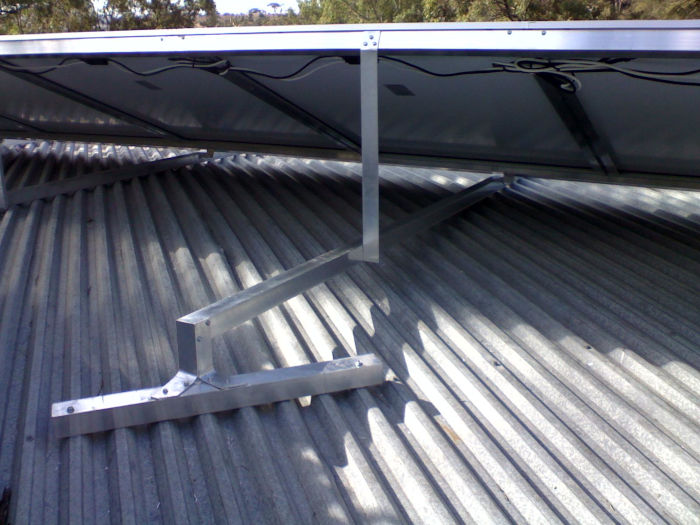
100-watt thin film panels, tilt frame, off-axis over a curved roof with limited purlins to screw into. Inventing and hand-making frames to point due North was fun in 2008.
When you only had 1kW of panels, it made sense to get the best from them because these systems retailed for 12 grand. In terms of energy, it was only ever going to average 4.4kWh each day, and those units were valuable when they paid 50c each on a premium feed-in tariff.
The mantra was perverse: export during the day and buy power back at night for half price, but that’s what was needed to get the early adopters to spend on new technology and establish a whole new industry in the process.
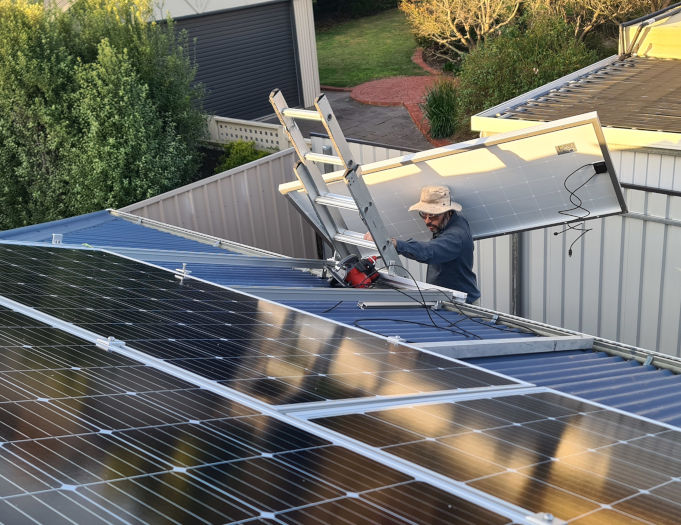
In 2023, I’m still carrying them up ladders, on the weekend, for fun.
How Does This Affect My Roof Now?
Solar is now so cheap it makes me sigh that I spent so much time building perfect reverse tilt arrays, angled off the roof axis. These days, you just throw more panels at the problem. It’s equal parts amazing and sad that efficiency is no longer a driver.
Solar PV is so cheap that Australians can afford to keep building rubbish houses and ameliorate the running costs by consuming more resources. It’s proving easier to rely on technology bolted to the roof than it is to actually design better houses.
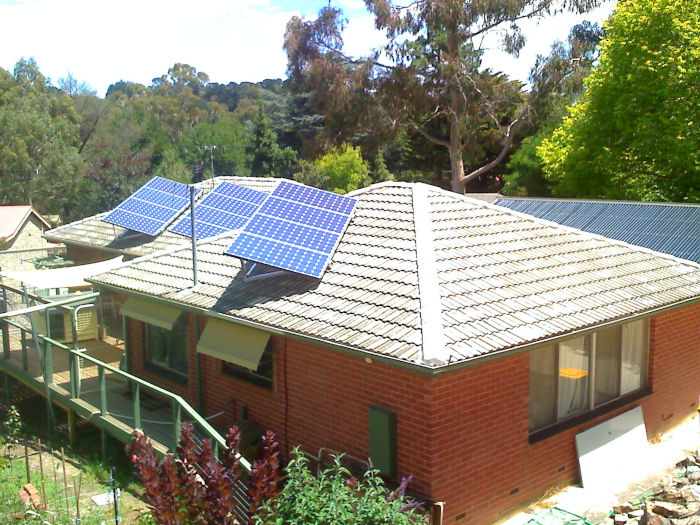
This customer didn’t own the trees that needed to be cut down, so we came at it another way. Vintage image credit: Solar Depot
Tilt Frames On South Roofs Mean Fewer Panels
Seeing as angled frames create long shadows, you’ll usually get only one row on a south-facing roof, where three rows of panels will fit if they’re laid flush.
Tilt Frames On Flat Roofs Can Mean More Panels
But flush isn’t always best. East/west tilt frames on flat roofs can fit more panels and save on panel cleaning.
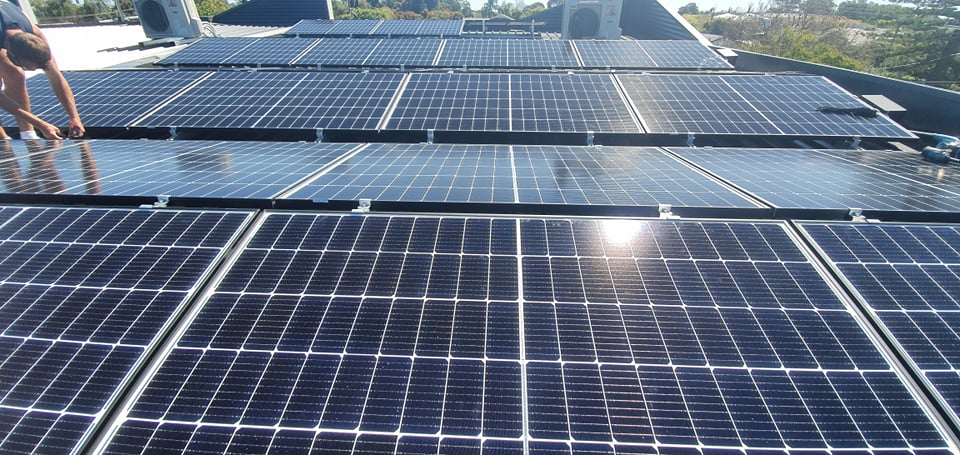
Be Wary Of Tilt Frames On Tiles
Conventional tile roof hooks are designed to have a tile lapped over the top so they’re mechanically waterproof, but this means they inevitably have some flex in them. It doesn’t really matter when the solar panel array is parallel to the roof, but having tilt frames means there’s a big sail to catch the wind and a lot of potential for rattling and even broken tiles.
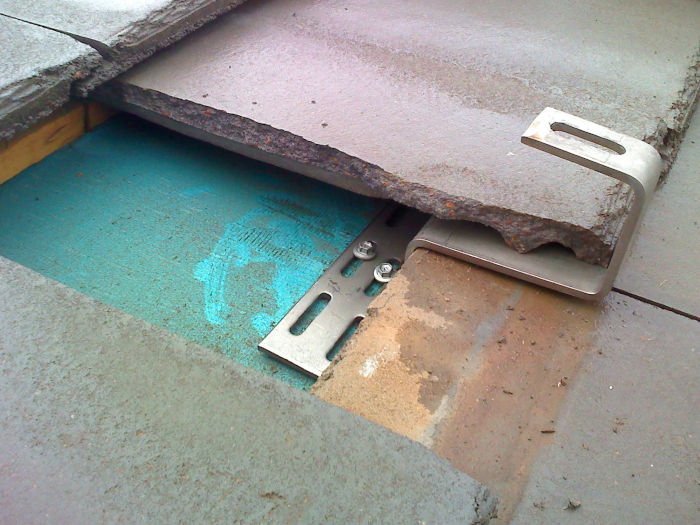
This tile split lengthwise when it was stepped on, but it shows how a typical tile hook lays. If there’s trouble, typically it’s the tile under the bracket under that cracks and leaks.
Using hangar bolts is a much sturdier way of doing it, but they must be screwed into the rafters, which means you’ll seldom get through the ideal part of a tile. Instead, you’ll have dozens of holes relying on silicone sealant, not gravity, to prevent leaks.
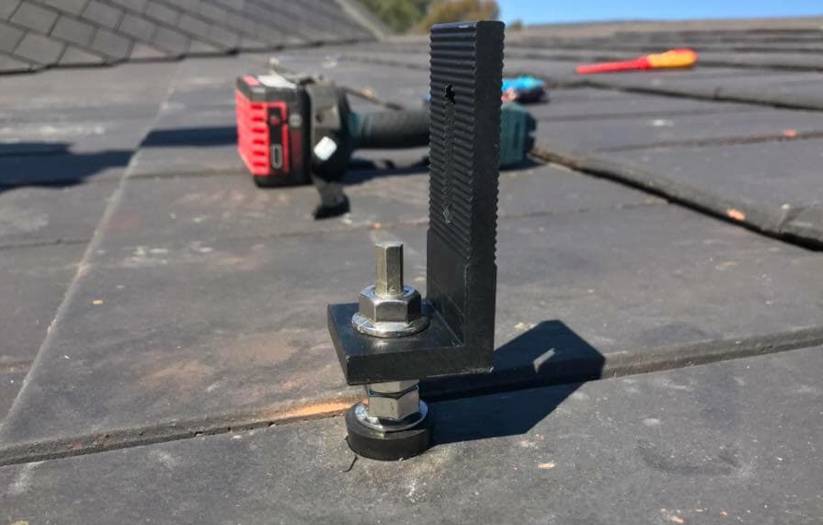
Hangar bolts are the only option on some roofs such as slate or really flat shingles.
The Real Use-Case For Microinverters Or Optimisers
With the trend to needlessly complex roof lines, the literal rise of small 2-storey townhouses, juxtaposed with increasing solar panel sizes, installs are becoming tricky. In many instances, having any solar at all means you have to resort to a series of one, two or three-panel arrays.
For these cases, Enphase microinverters (or maybe SolarEdge and Huawei optimisers) really come into their own because conventional solar inverters don’t work with short low-voltage strings of panels.
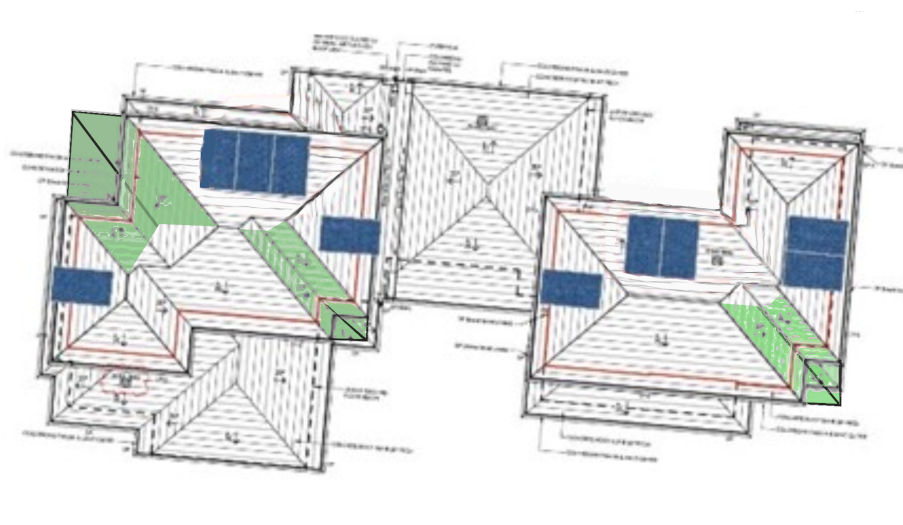
Using the south sides of these two townhouses would add some more capacity. Best approach is to straighten the roof line into an L shape (fill the green sections) and more than double the useful space.
West Is The New North, South Is The New Black
Using batteries to store electricity might be trendy, but using your own energy whenever it’s available makes most sense. As we move forward and Time Of Use electricity pricing becomes the standard, you’ll find that after 3pm (when the price of power triples at my place) it makes perfect sense to keep generating as long as you can with west-facing solar panels.
SQ’s feed-in-tariff comparison tool reveals that the Energy Locals’ Tesla Energy Plan in NSW will pay you a 30-cent feed-in tariff after 2 pm 1.
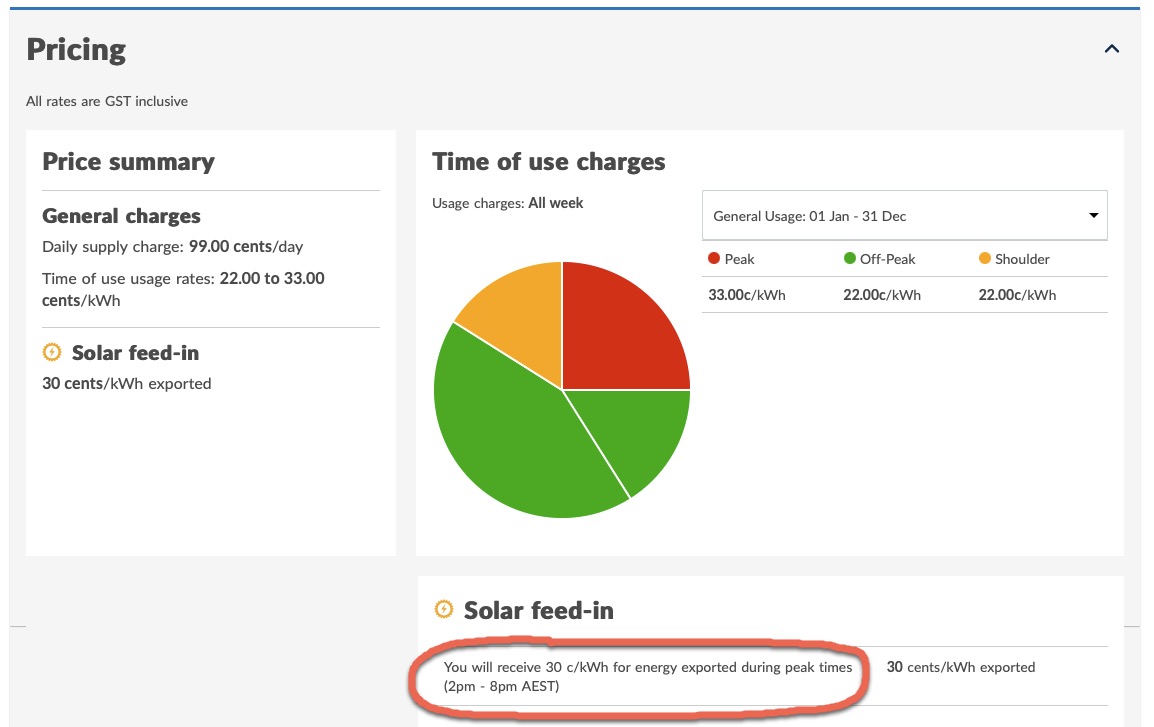
So while west is even better than north these days, having southern solar for summer will still make hot afternoons more bearable, with extra shade on your roof and extra energy to run the air conditioning.
Original Source: https://www.solarquotes.com.au/blog/roof-orientation-solar-australia/



